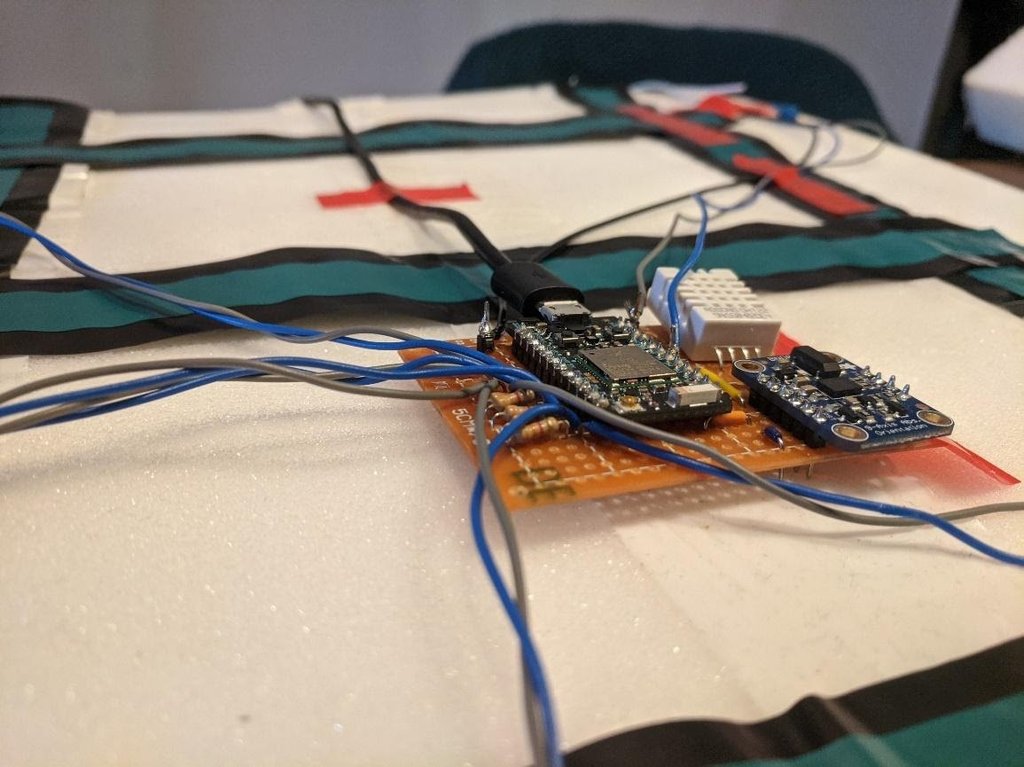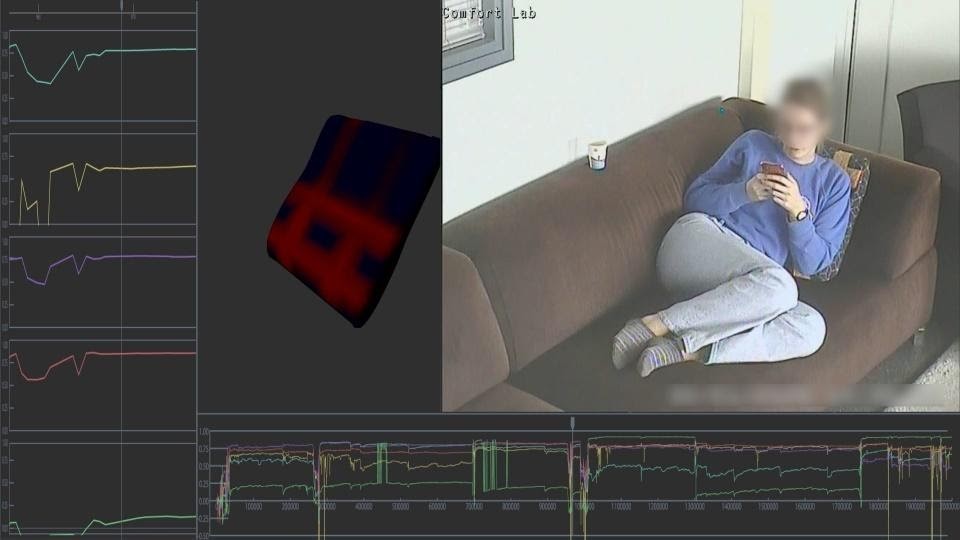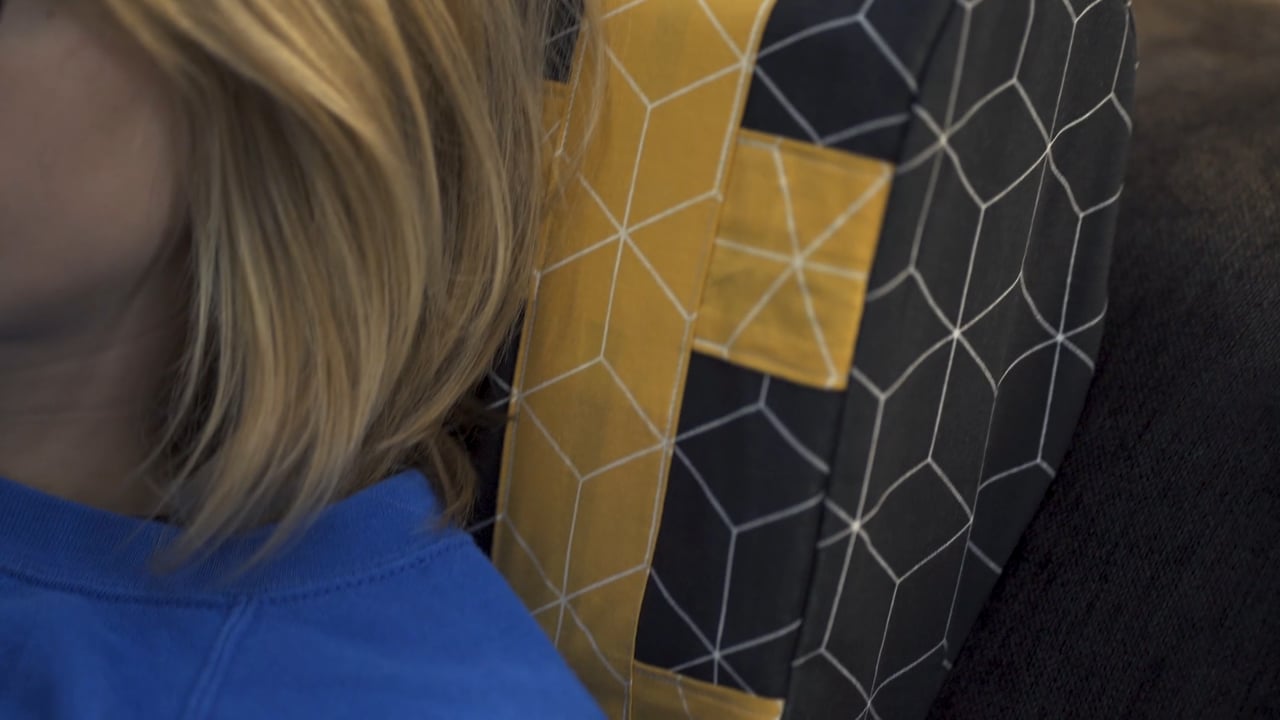This design project used a data-centric approach to design a pillow that can actively help people relax at home. An important challenge in designing interactions with intelligent artefacts is about shaping their senses: how do objects see the world through data and how does this perception drive their autonomous behaviour? Data-centric design provides a way to explore this by utilising the perspective of the object in collecting machine data through sensors and algorithms. However, it is challenging to assess and make sense of this data in isolation. Designers tend to rely on rich observational and subjective data to inform their design. This project explores how such data can be integrated with machine data during the design process.
A smart pillow was envisioned which would actively provide comfort to users through hugging and by helping them avoid slouching. The pillow prototype could sense the pressure applied on it, how it’s positioned in space, and how warm it is. People were filmed using the pillow and they were asked what they liked or disliked about it. A data visualisation tool was built to analyse the video recordings with the sensor data in a single glance.
This was a critical step in assessing the meaning and accuracy of the pillow’s perception of the world. For instance, it allowed the designer to discover the pillow’s ability to recognise a person slouching or sitting actively as well as its ability to distinguish between stable or unstable sitting positions. This provided a better understanding of the pillow’s perceptive capabilities and inspired thinking about ways it might interact.
Data-centric design approaches are needed to design intelligent artefacts that provide people with collaborative forms of support. However, understanding sensor data is not enough. The relationship between sensor data, human behaviour and human experience is critical to develop the appropriate insights. New data-centric tools play a key role in helping designers find these relations.
In this project, the data visualisation tool provided designers with a unique perspective in the way the smart pillow perceived the world. A next step would be to further integrate the subjective data in the data visualisation tool and harness the sensor data to drive the intelligent behaviour of artefacts in meaningful ways.






